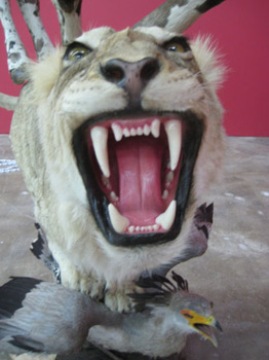
Opening events are underway for Annual Report: A Year in Exhibitions, the 7th Gwangju Biennale. Under the artistic direction of Okwui Enwezor, (and co-curated by Hyunjin Kim and Ranjit Hoskote) the exhibition is “a report on the distribution system of artistic and cultural forms and a reflection on the intermediary gap between artists, producers, practitioners, and audiences.” Annual Report includes 127 artists from 36 countries, including Art21 artists Jennifer Allora & Guillermo Calzadilla (Season 4) and Kerry James Marshall (Season 1); visit the GB2008 website for the complete roster.
On view through November 9, 2008, the Biennale is developed around three components: On the Road, a series of exhibitions from 2007 and 2008; Position Papers, a series of curatorial proposals and experiments by curators working in Southeast Asia, North Africa, South Korea, and the United States; and Insertions, a series of new and independent projects, either commissioned specifically for the biennale or invited as proposals into the exhibition framework. The Biennale spans five venues: Biennale Hall, Gwangju Museum of Art, Uijae Museum of Korean Art, Cinema Gwangju, and Daein Traditional Market. According to the website:
“The importance of the Gwangju Biennale is, at least, twofold: on the one hand, it is one of the key international cultural institutions to emerge from Korea’s unique modern, national, and historical experience, and linked to the dynamism of Asia in the 21st century…At the same time, the Gwangju Biennale has evolved into one of the few pioneering international exhibitions to engage in the task of analyzing the impact of globalization on the field of contemporary art, and to challenge an older system of international exhibitions based on the outmoded system of national pavilions. In so doing, Gwangju Biennale has provided the space in which to explore the changing nature of international artistic networks, and to examine new modes of artistic subjectivity and conditions of contemporary cultural production that extend beyond national borders or focus on regional modes of identification.”
Though empty at the moment, the curator’s blog will hopefully produce interesting dialogue. Planned discussions include an international symposium and an associated two-day seminar entitled The Politics of Spectacle and the Global Exhibition, which will take place in Gwangju from September 24 to September 27.



